Part 2 – How HVAC Systems Work
This week, I expand upon our previous newsletter and continue the discussion about HVAC systems (PTAC, VTAC, and VRF). In this newsletter, I will discuss the basics of each HVAC system including their installation and basic operations.
PTAC
1. Basics:
- PTAC stands for Packaged Terminal Air Conditioner.
- These are single, commercial grade, self-contained, and combination air-conditioner/heat pump units- designed to provide the heating and cooling needs for individual guestrooms. Units are installed on an exterior wall typically below a window.
- A standard size is 42” wide.
2. Installation:
- The PTAC unit is installed in a sleeve that serves as a platform for the outdoor grill and interior unit kit. The sleeve is connected to the electrical and condensate lines.
- Ease of installation: Local handyman or onsite maintenance can install.
- A PTACs compressor pumps refrigerant to cool the coils.
- Air passes over the coils and provides guestroom cooling.
- The coil attracts heat and humidity which is then exhausted to the outside via an exterior grille.
4. Heating:
- Two types of heat are available – heat pump or electric heat.
- Heat pump reverses the cooling cycle on the air conditioner, and refrigerant is used to heat the coils.
- Air passes over the coils and provides guestroom heat.
- Electric heat units have an optional additional heating element near the vents that is heated using electricity.
- The air is heated when it passes over the element.
5. Outside Air
- Standard PTAC units cannot provide dehumidified fresh air to space.
- Please note – Several manufacturers provide “outside air” PTACs that do offer this feature.
- Typically, fresh air is provided via a separated DOAS (Dedicated Outside Air System) and outside/dehumidified air is directly ducted to the guestroom.
VTAC
1. Basics:
- VTAC stands for Vertical Terminal Air Conditioner.
- A compact through-the-wall packaged system. Provides total heating and cooling functions for single or multiple guestrooms.
2. Installation:
- The terminal is installed in a closet-like corner enclosure and has a top-air discharge that is ducted into a single room or multiple rooms.
- A typical VTAC closet is 30” x 30” including the VTAC and clearances required.
3. Cooling:
- Same as PTAC (see above).
4. Heating:
- Same as PTAC (see above).
5. Outside Air
- Standard VTAC units cannot provide dehumidified fresh air to space.
- Please note – Several manufacturers provide “outside air” VTACs that do offer this feature.
- Typically, fresh air is provided via a separated DOAS (Dedicated Outside air system) and outside/dehumidified air is directly ducted to the guestroom.
VRF
1. Basics:
- VRF stands for Variable Refrigerant Flow.
- There is a single outdoor condensing unit connected to 24 (maximum) fan coil units, which are located in each guestroom.
2. Installation:
- Condensing Unit – The outdoor condensing units can be easily installed outside at grade or on the roof.
- Fan coils – Guestroom entry foyers or bathrooms are the perfect location for fan coil units to allow necessary duct connections and maintenance access.
3. Cooling & Heating
- In cooling mode, the VRF condenser pumps cold refrigerant to each fan coil unit. The air passes over the coils and provides guestroom cooling.
- In heating mode, the VRF condenser works as a heat pump where the cooling cycle is reversed and the hot refrigerant is sent to each fan coil unit. The air passes over the coils and provides guestroom heat.
- Variable refrigerant flow systems with heat recovery can operate simultaneously in heating and/or cooling mode, enabling heat to be used rather than rejected as it would be in traditional systems. In other words, heat can from taken out of one room (i.e., cooling in room 1) and be provided to another room (i.e., heating in room 2), without engaging the condenser.
4. Outside Air
- Fresh air is provided via a separated DOAS (Dedicated Outside air system) and outside/dehumidified air is directly ducted into the FCU.
We all have the immediate question- “So how much does it cost?,” so I will discuss this topic in the upcoming newsletter. In the meantime, feel free to reach out with any other questions!
Thank you,
Blair Hildahl
Blair@hotelsuniversity.com
608.304.5228


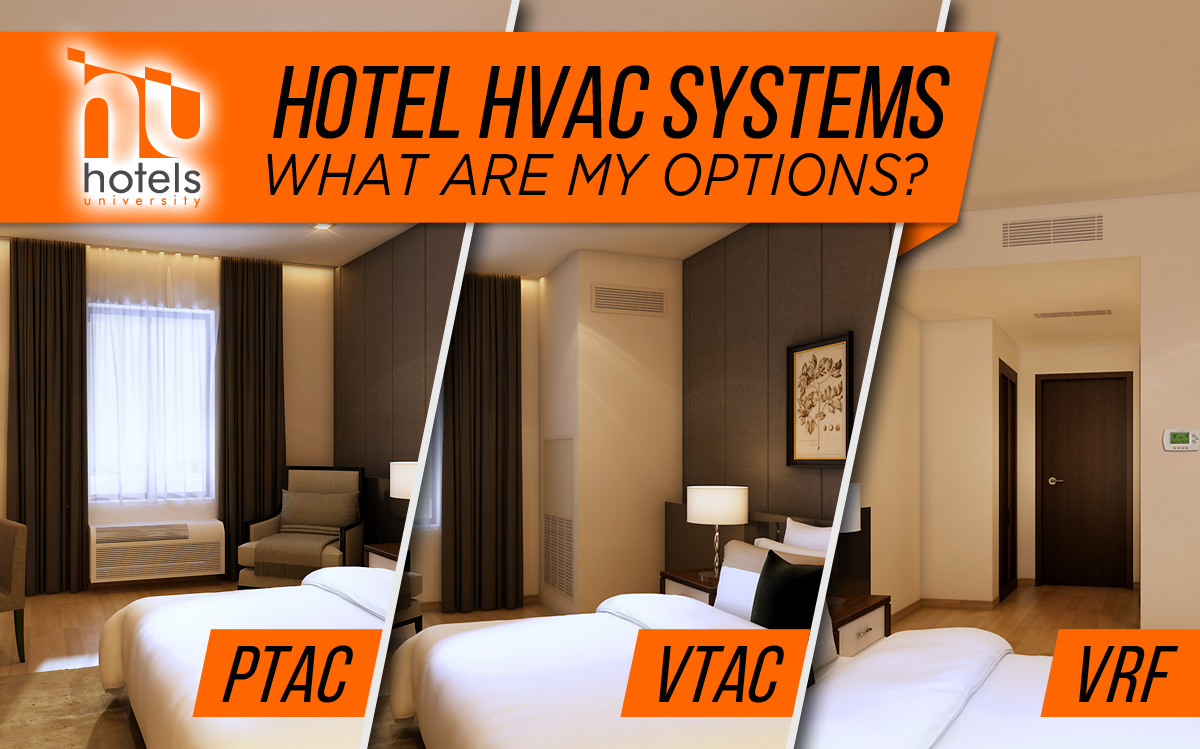
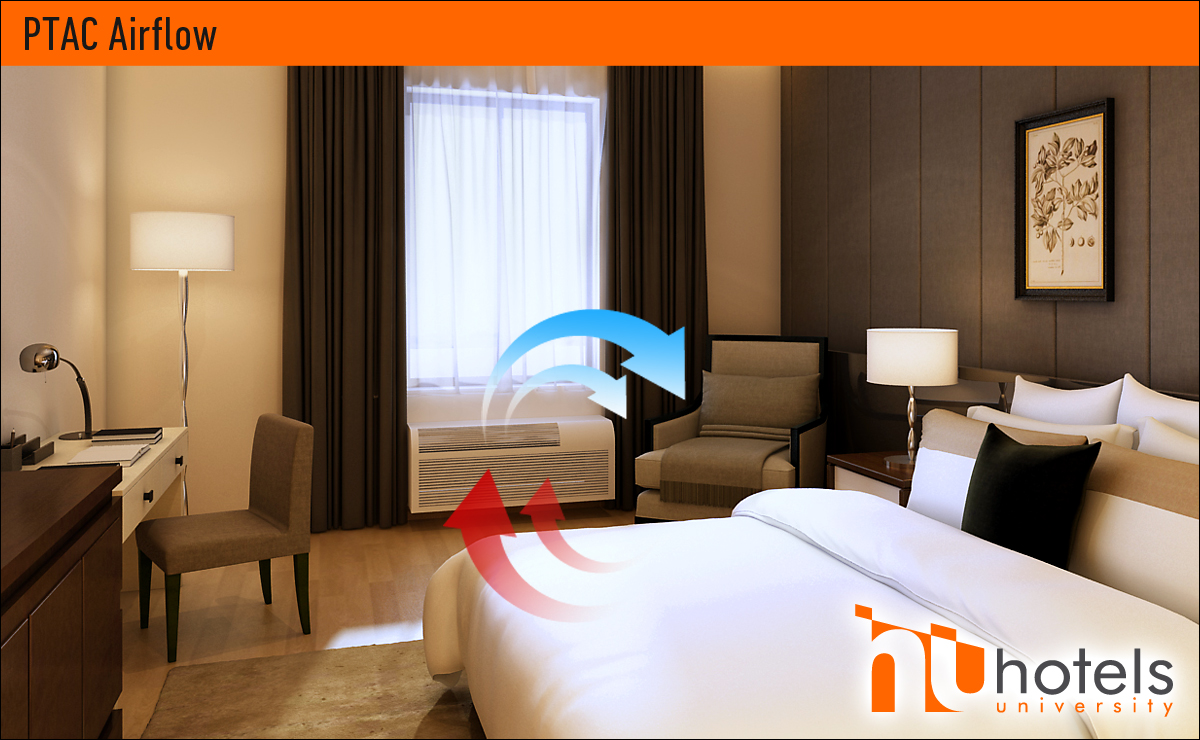
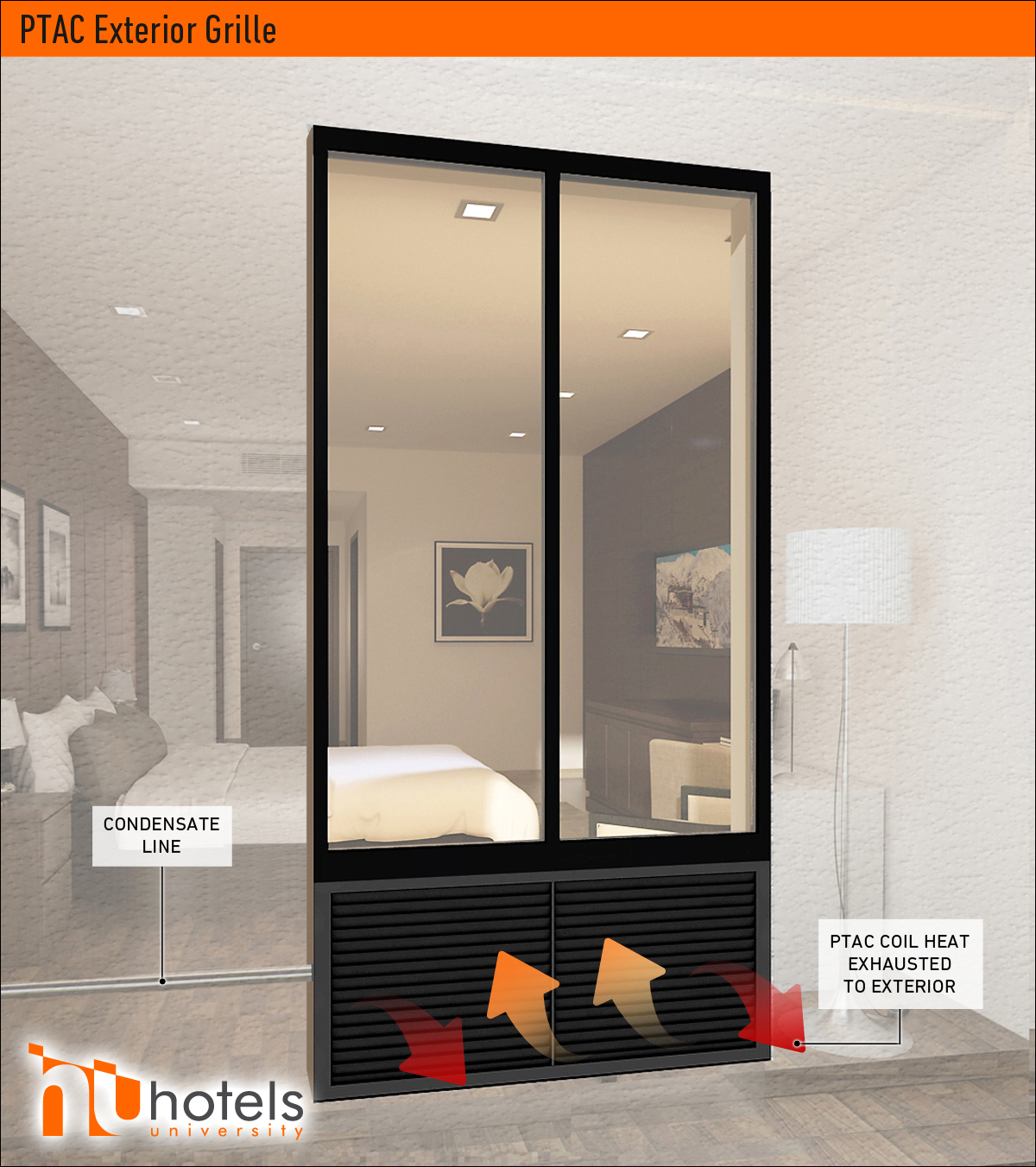
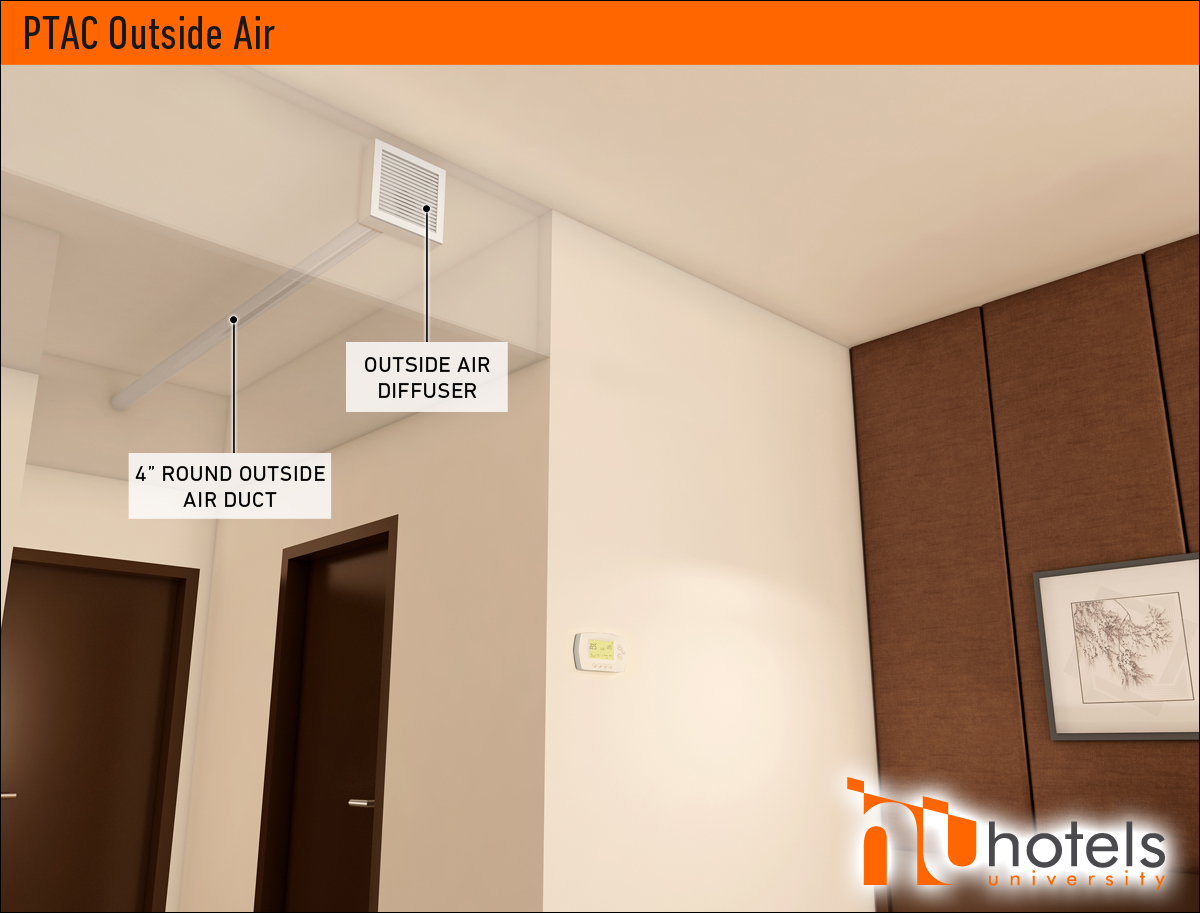

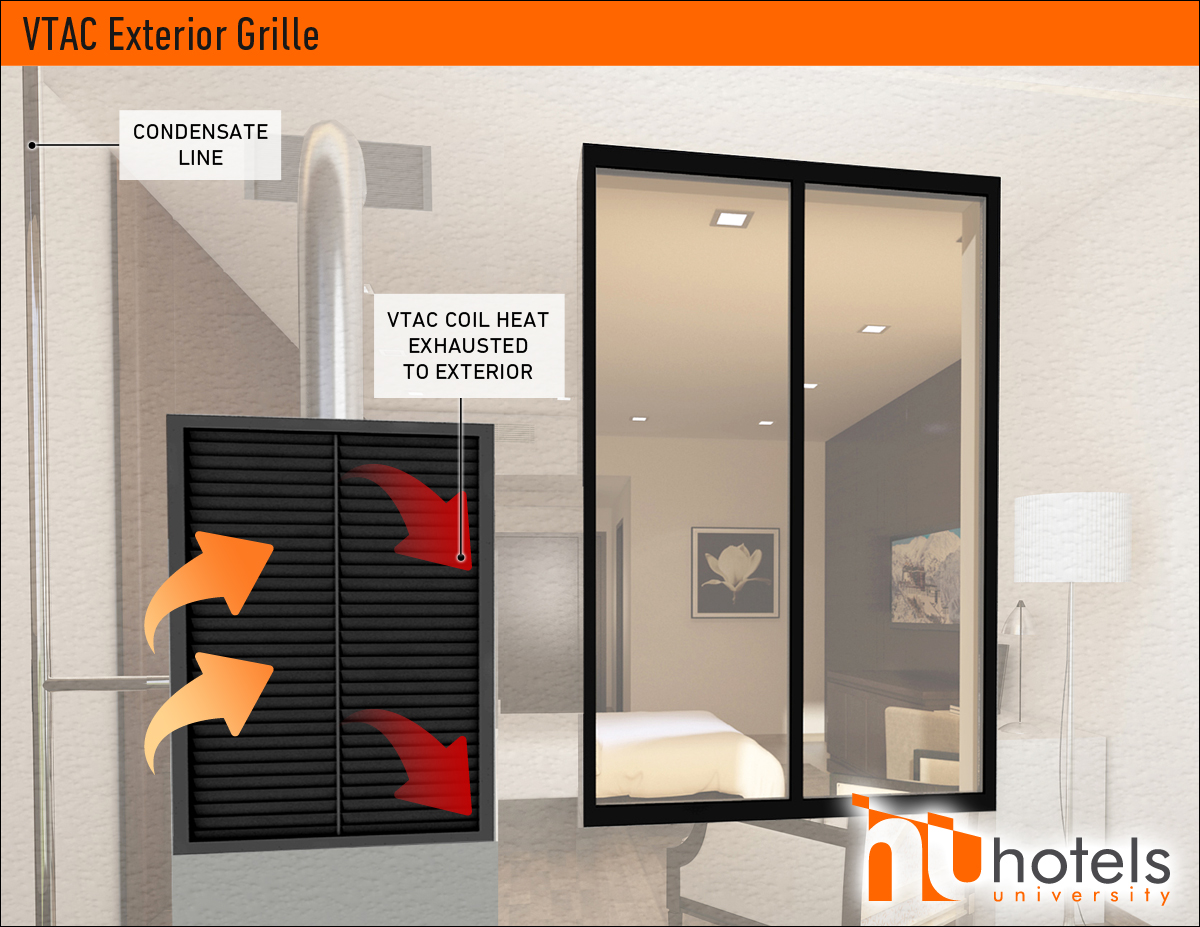
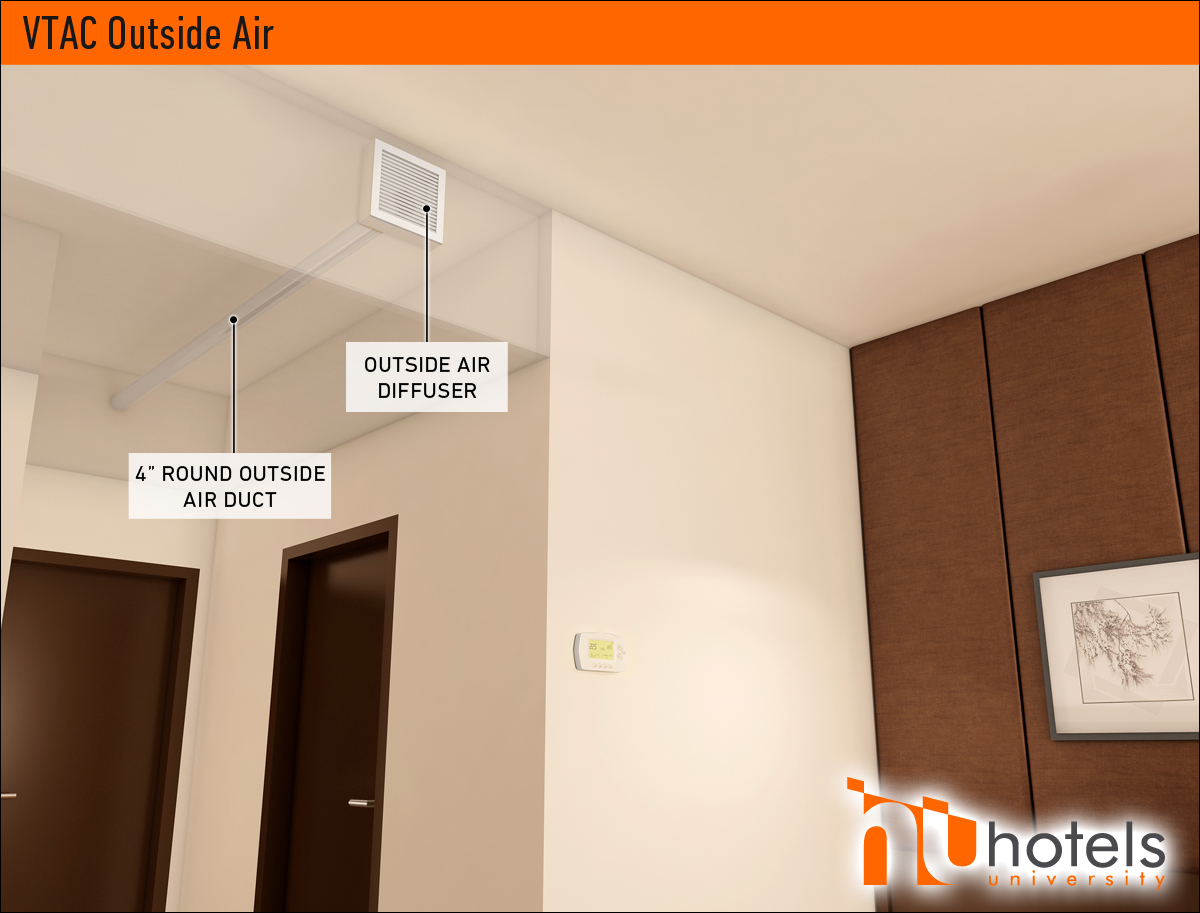
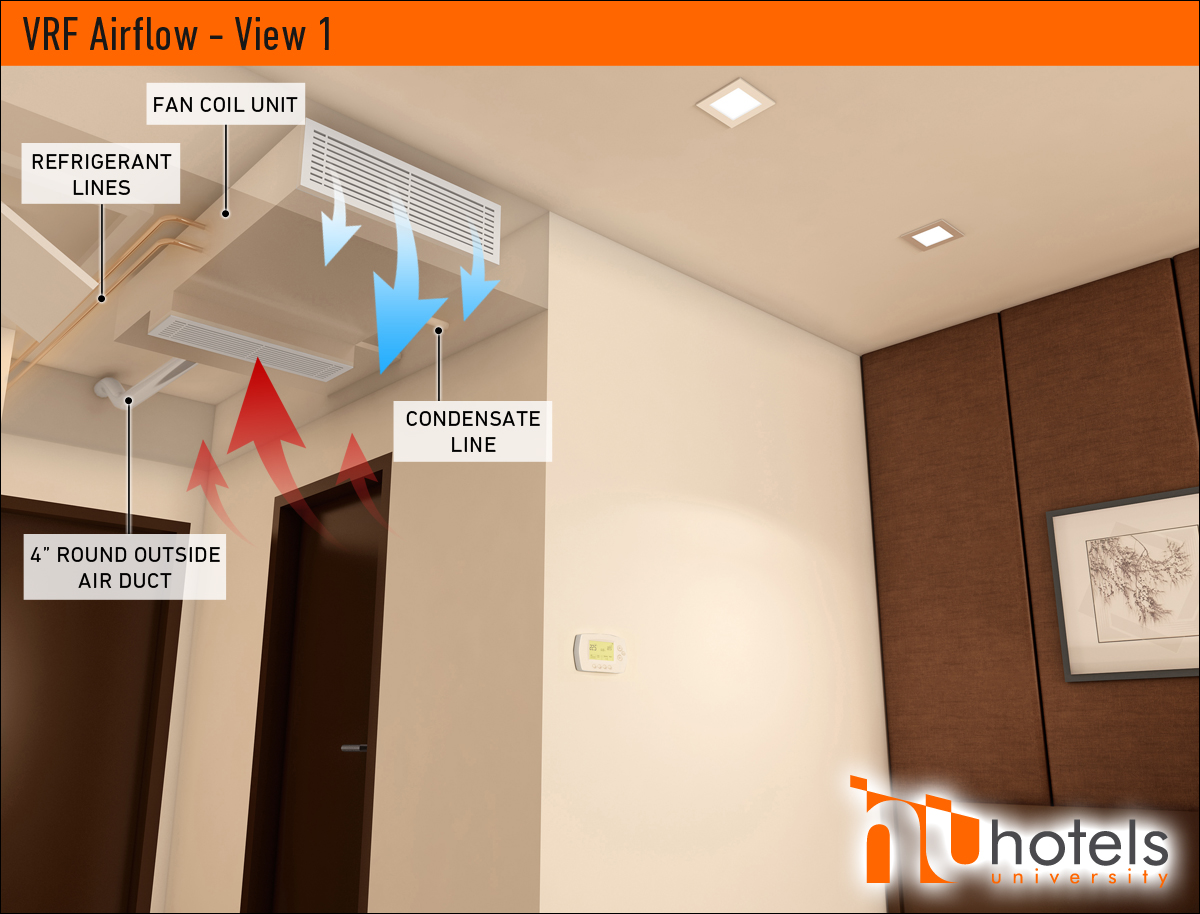
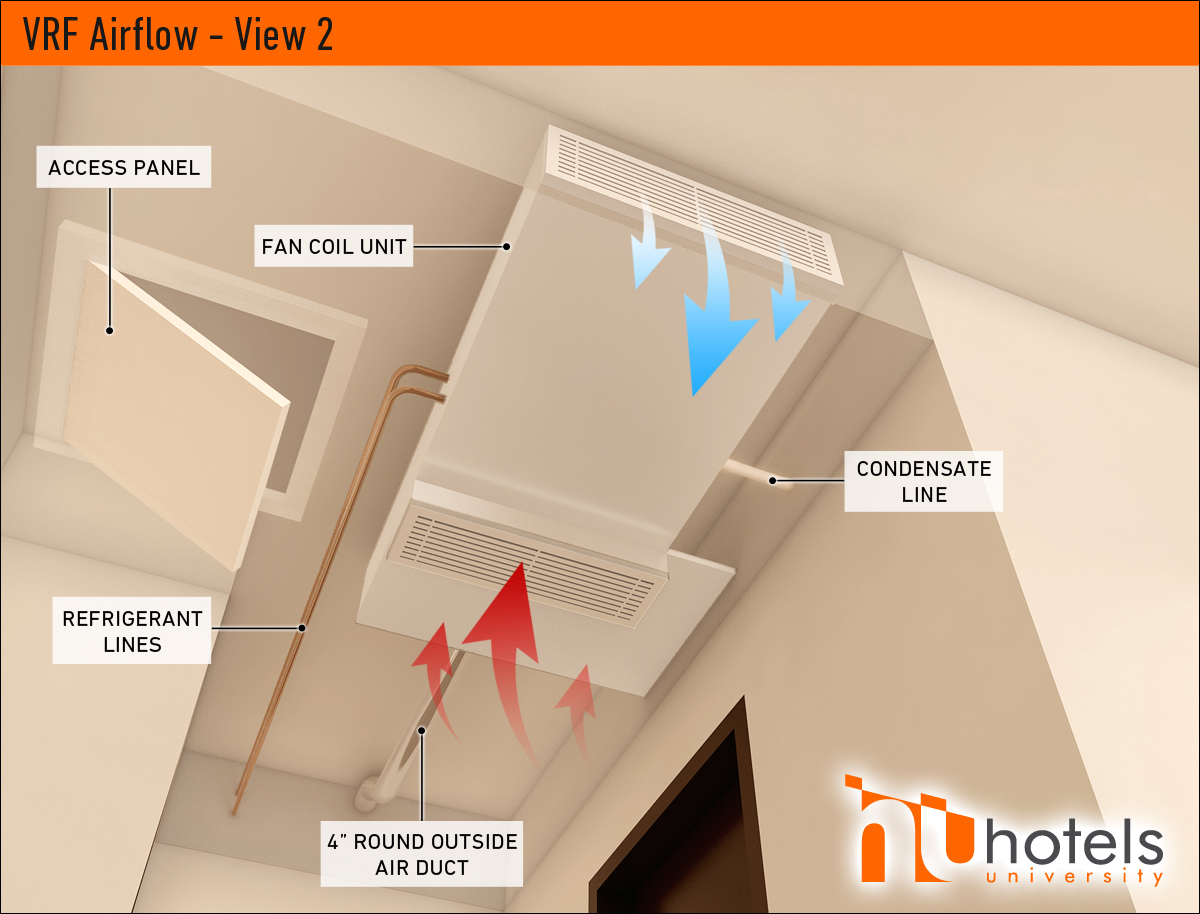
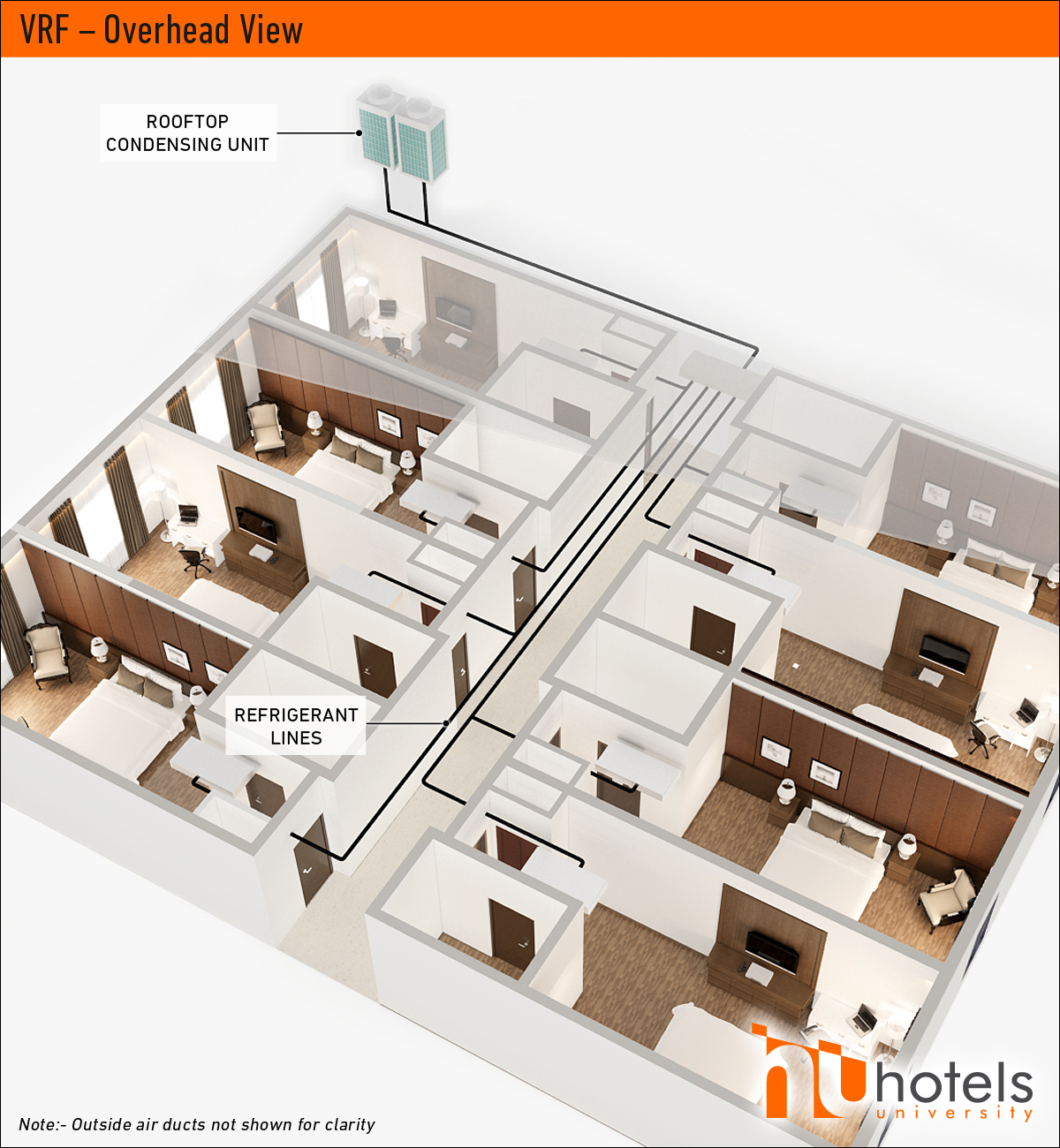
Leave A Comment